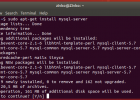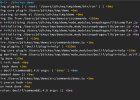The Sakila database is a great free tool that allows you to create a database for your website. The database can be used for a number of different purposes. It is a great tool for beginners who want to start building a site, as it provides a very easy to use interface. The Sakila database is a good option if you have never created a database before.
Why Install a Sample Database?
If you are looking for a way to learn more about the inner workings of a database, then it’s important that you install a sample database onto your computer. A sample database can help you to understand exactly how a database works and what its features are. When you create a sample database, you will also be able to see how things look before you actually put data into the database.
There are a number of reasons why you may want to install a sample database. For example, you might need to know whether there is an issue with the software that you are using, or you could just be interested in seeing how things work. In addition, you might not have any idea what to do next, so creating a sample database is great for finding out what needs to be done.
Sample databases can come in all sorts of different types.
Install the Sakila Database for beginners
Step 1: Make sure you have the right version of MySQL: You must have MySQL 5.0 or higher.
Step 2: Get the Sakila Database: Download the Sakila Database from the MySQL website.
Step 3: Unzip the Sakila Database: Unzip the Sakila Database to your computer.
Step 4: Open the Sakila Database: Open the Sakila Database on your computer.
Step 5: Create a Database: Create a database in Sakila using the Sakila Database.
Step 6: Create a Table: Create a table in Sakila using the Sakila Database.
Step 7: Create a Database Schema: Create a schema in Sakila using the Sakila Database.
Conclusion
To conclude, if you want to install a Sakila database on your computer, you will need to download the Sakila Database installation files from the following link. After downloading the Sakila database files, you need to open them using your preferred software like MySQL IDE and follow the instructions provided.



